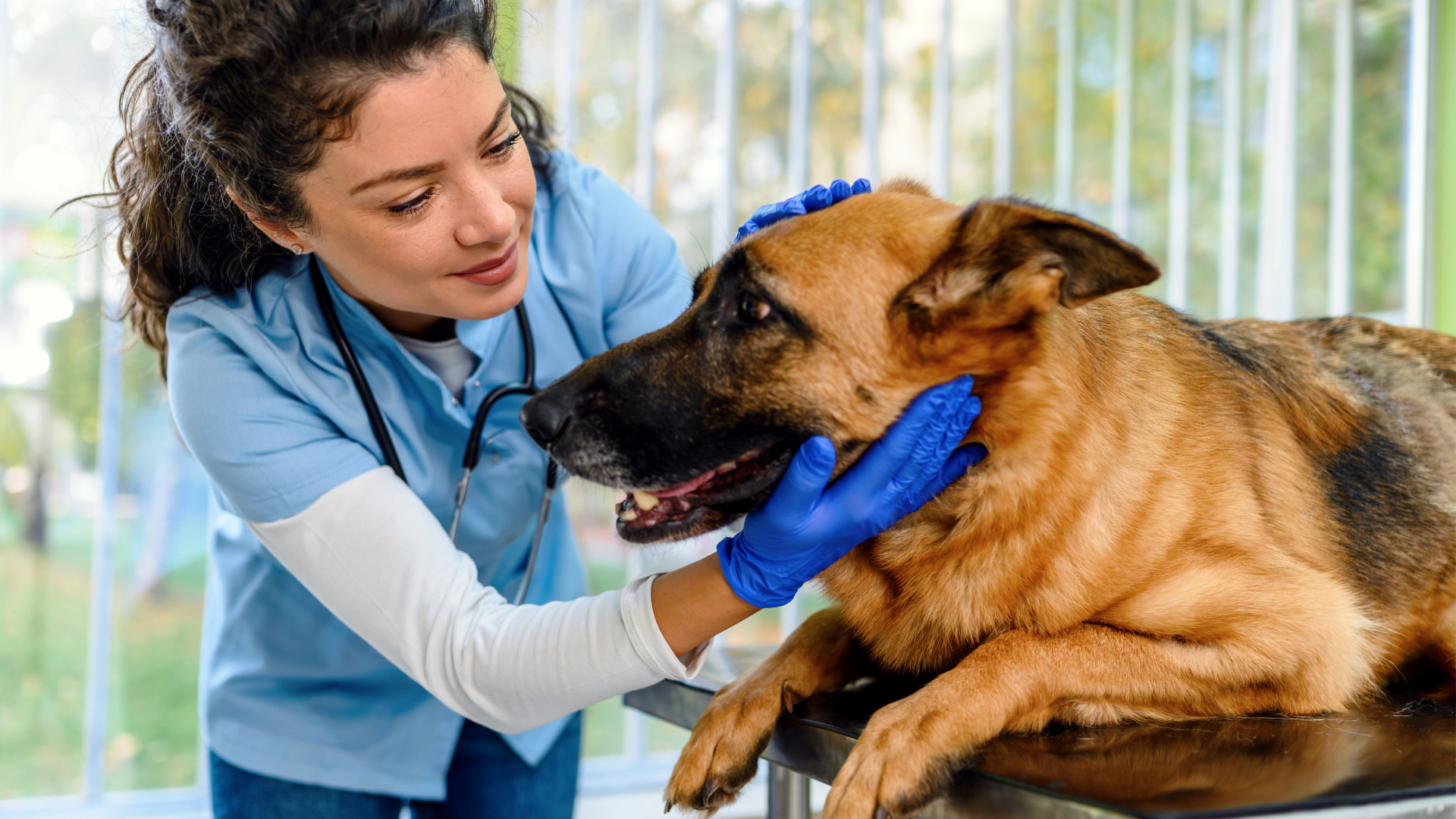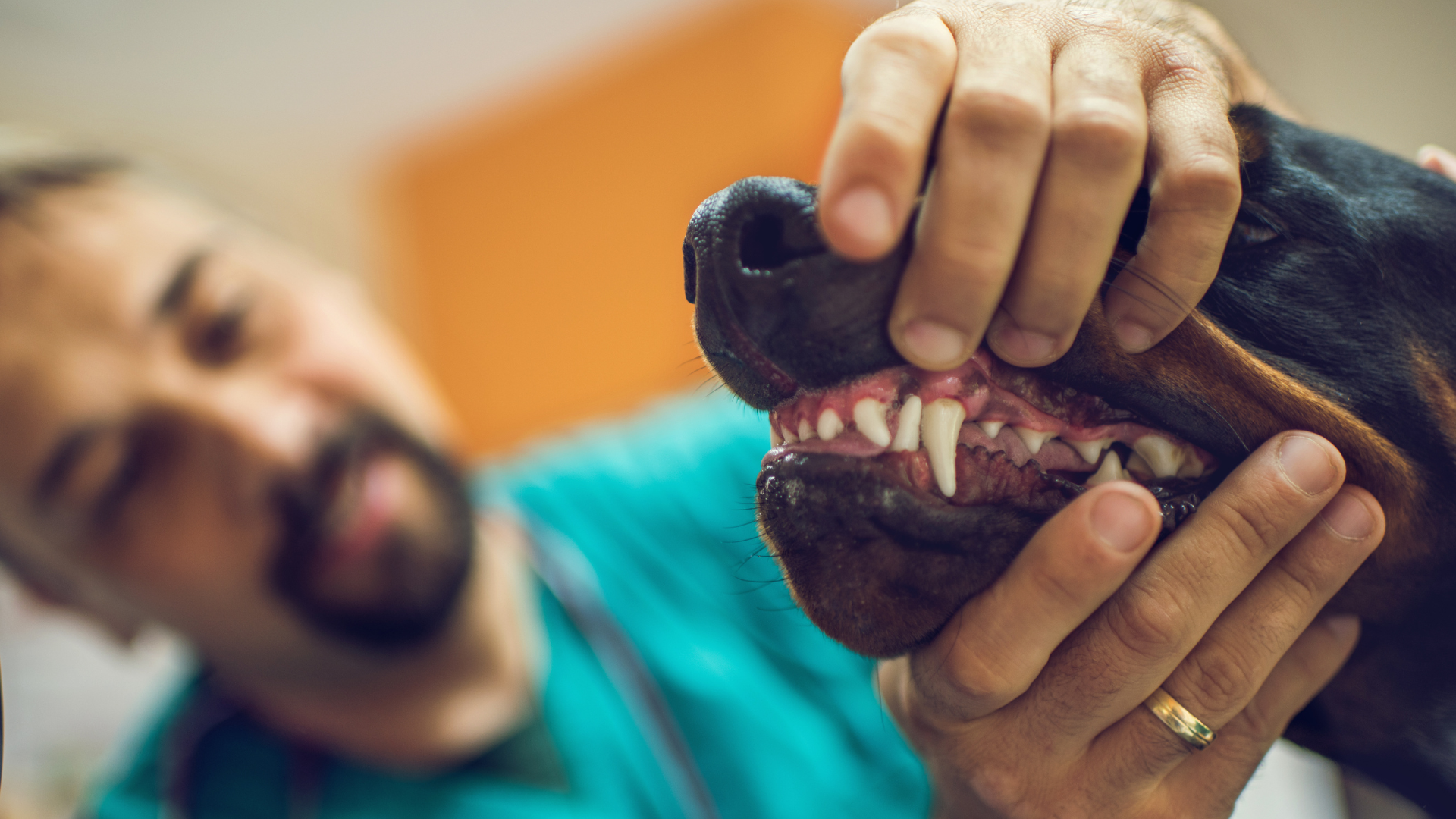
Von Willebrand disease in dogs is the most common inherited blood disorder our canine friends suffer with, and it also happens in humans and many other species. It’s a bleeding disorder – a failure of the blood to clot – with symptoms that can vary from mild to severe.
Luckily, von Willebrand Disease is rare enough that I haven’t had to deal with many dogs with the disorder in my eight years of being a vet, but I still keep a close lookout for it.
In this article, I’ll explain what von Willebrand Disease is and – if your dog is unlucky enough to have it – what the likely outcome will be. Just to reassure you though, that the most common form of von Willebrand disease in dogs is mild and has a near-normal life expectancy.
What is Von Willebrand disease in dogs?
Von Willebrand Disease (vWD) is an inherited blood clotting disorder, similar (but different to) hemophilia. It is known to affect dogs, humans, and many other species, but it’s not contagious – it’s genetic, with the type of inheritance pattern determined by the gene mutation that causes the problem.
When there’s an injury that’s bleeding, platelets gather at the site of the injury, forming a mesh to reduce the blood flow. Von Willebrand’s factor is a protein complex made up of several small and large proteins that together act like glue to hold the platelets together.
Dogs with von Willebrand’s Disease have a von Willebrand factor (vWF) deficiency. They don’t have enough of the proteins to hold their platelets together when they’re bleeding. The type of deficiency they have determines the ‘type’ of vWD they have – and therefore how serious the disease is.

Type 1 von Willebrand Disease in dogs
Type 1 von Willebrand Disease is the most common type, and also the mildest. It occurs when dogs have a mild deficiency in all the proteins making up their von Willebrand factor, but the proteins have a normal structure. These dogs may have no symptoms or have slow clotting that doesn’t cause major issues.
Type 2 von Willebrand Disease in dogs
Type 2 von Willebrand Disease happens when dogs have no large vWF proteins and have low levels of the smaller proteins. This can slow down clotting a lot, meaning these dogs can have severe bleeding episodes.
Type 3 von Willebrand Disease in dogs
Type 3 von Willebrand disease is when dogs have low or no von Willebrand factor at all – less than 1% of normal. This slows clotting significantly, meaning this is the most severe form of von Willebrand disease in dogs.
What dog breed is most affected by von Willebrand's disease?
Because von Willebrand Disease is a genetic defect, it’s inherited. However, inheritance patterns are complicated in vWD, with different genes mutations possible and different inheritance patterns for each. It’s thought that Type 1 vWD is incompletely dominant, while Type 2 and 3 vWD are recessive.
In terms of actual proportions, the dog breed most affected by von Willebrand Disease is the Doberman Pinscher, which tend to get Type I disease. Other dog breeds affected by von Willebrand include:
- Shetland Sheepdog (Type 1 and Type 3)
- German Shepherd Dog (Type 1)
- Standard Poodle (Type 1)
- Airedale (Type 1)
- Bernese Mountain Dog (Type 1)
- Golden Retriever (Type 1)
- Corgi (Type 1)
- Greyhound (Type 1)
- Schnauzer (Type 1)
- German Short-Haired Pointer (Type 2)
- German Wire-Haired Pointer (Type 2)
- Scottish Terrier (Type 3)
- Chesapeake Bay Retrievers (Type 3)
Other breeds have also been recorded to have von Willebrand disease, but these are usually sporadic and/or isolated cases.

What are the symptoms of von Willebrand disease in dogs?
Dogs with von Willebrand Disease can have a range of symptoms. Some dogs with the mild form of the disease can be asymptomatic for much of their lives until another disease pushes them into clinical symptoms. This is especially true if they aren’t neutered and haven’t had any injuries that would bleed. Most dogs, however, have symptoms in the first year or two of life, including:
- Bruising after surgery
- Slow to stop bleeding after an injury
- Excessive bleeding when the puppy teeth are lost
- Excessive bleeding during heats (seasons) or birth
- Spontaneous bleeding from the nose or mouth
- Bloody urine
- Bloody stool (see our blood in dog stool article for more information)
- Unexplained bruising
- Spotty dog gums (see our dog gums article for more information on what unhealthy gums look like)
- Uncontrollable bleeding during surgery or after injury, which may be fatal
How is von Willebrand disease in dogs diagnosed?
If your dog has any of the symptoms above, it’s sensible to talk to your vet, especially if your dog is listed in the susceptible breeds.
Your vet will have a suspicion of von Willebrand disease from your dog’s symptoms and history. A Buccal Mucosal Bleeding Time test can help to confirm slow clotting – a standardized tool makes a small incision in your dog’s gums, and your vet times how long it takes to stop bleeding.
If this test confirms that clotting time is abnormal in your dog, your vet may recommend a von Willebrand factor assay – a test to measure the amount of von Willebrand factor your dog has in their blood. The result is given as a percentage of normal. Less than 70% is considered affected, and less than 50% is likely to cause symptoms. Dogs with Type 3 vWD have values of 1% or less.

DNA tests can also tell whether your dog has vWD, whether they’re unaffected, or whether they’re a carrier somewhere in the middle – unaffected but able to pass on dodgy genes. However, it’s important to remember that the relationship between genes and disease is complicated – testing your dog’s percentage of von Willebrand factor helps to determine if your dog is likely to be symptomatic for the disease.
Before breeding, owners of affected breeds should consider a the best DNA dog test to determine whether either parent carries a von Willebrand gene. The same von Willebrand factor assay above can also give an indication of how affected a dog is, and how likely they are to pass on a bad gene.
What is the best treatment for von Willebrand disease in dogs?
Canine von Willebrand Disease can’t be treated as it is a genetic disorder, but we can help manage the risk of a bleed, and treat that bleed aggressively if it happens. This means avoiding rough play, being careful clipping nails, and monitoring your dog closely for bruising or bleeding. Injuries will need to be treated rapidly, with skin glue and bandages used to help staunch the flow of blood, and plasma transfusions if the bleeding isn’t stopping.
It’s also important to let your veterinary practice know if your dog has von Willebrand Disease. If dogs are known to have vWD, it may limit their options for treatment of other conditions, as there are several medications that dogs may not be able to have if they’ve got vWD, for example:
- Aspirin
- Heparin
- Some antibiotics
- NSAIDS
Having von Willebrand Disease also means that surgery is a lot more risky, and it should be avoided in any dogs with symptoms. If surgery is needed, dogs will need to be transfused with plasma products, which contain the proteins necessary to help stop bleeding. This can be very effective, but the effect only lasts about four hours before wearing off, so it isn’t a long-term option.
You might see a hormone called desmopressin acetate (DDAVP) mentioned when reading about treating von Willebrand Disease in dogs. DDAVP is only a temporary solution, as it only lasts for about two hours and long-term use of this hormone causes side effects.

What’s the prognosis for dogs with von Willebrand disease?
Despite the lack of good treatment options, most dogs with Type 1 vWD will have a normal life expectancy, unless they’re unlucky enough to have a severe injury or a disease that requires risky surgical treatment. Dogs with Type 2 and Type 3 vWD may also make it to old age, but the more severe their disease the less likely they can be kept safe enough to prevent bleeds.
At-home dog DNA tests mean that more people are aware of their dog’s vWD status than before. While it’s sensible to limit risky activities for these dogs, they may never be clinically affected and it may never impact their quality of life or life expectancy.
Von Willebrand Disease is thankfully fairly rare, and many dogs will have the mildest form of the disease. If your dog has symptoms suggesting slow clotting or spontaneous bleeding, they will need investigations. Dogs found to have abnormal concentrations of von Willebrand factor are at risk of symptoms and steps should be taken to avoid surgery and keep them safe.







